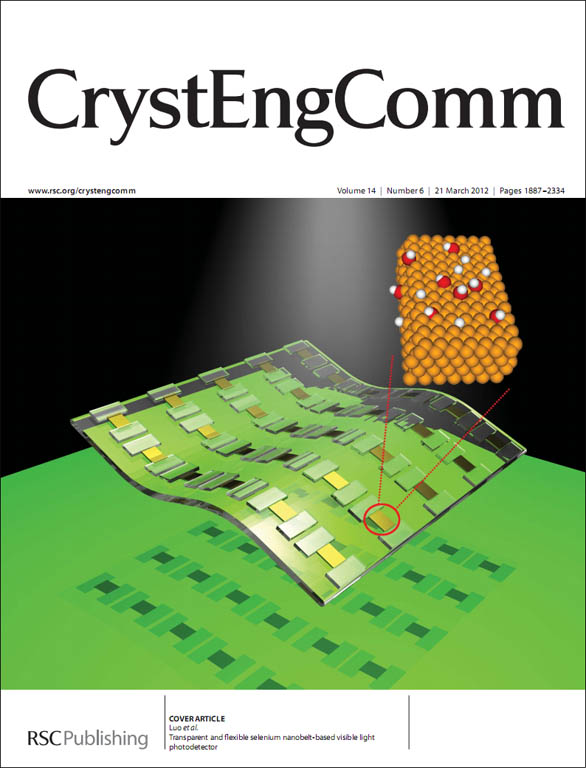| Transparent and flexible selenium nanobelt-based visible light photodetector |
Lin-Bao Luo, Xiao-Bao Yang, Feng-Xia Liang, Jian-Sheng Jie, Qiang Li, Zhi-Feng Zhu, Chun-Yan Wu, Yong-Qiang Yu, Li Wang
Abstract: We report a synthesis of single-crystal [001] oriented selenium nanobelts (SeNBs) through a simple vacuum evaporation at 250 oC. The width and thickness of the SeNBs are in the range of 100–800 nm and 20–90 nm, respectively. I–V analysis of an individual SeNB based field effect transistor (FET) reveals typical p-type electrical conduction. The hole mobility and concentration are respectively estimated to 0.63 cm2(V s)-1 and 9.35×1016 cm-3. The p-type electrical characteristics can be explained by the surface termination model, according to which, H- or OH- termination can induce a defect level slightly above the valance band maximum (VBM). A fully transparent and flexible visible light photodetector assembled on a polyethylene terephthalate (PET) substrate shows a high sensitivity to visible light illumination, with sensitivity and conductive gain as high as 3.27×104AW-1 and 6.77 ×104 respectively. Furthermore, the device also exhibits a stable performance and good reproducibility under different bending conditions. The high-performance visible light photodetector would enable application opportunities in future flexible and transparent electronics.
 |
|
|